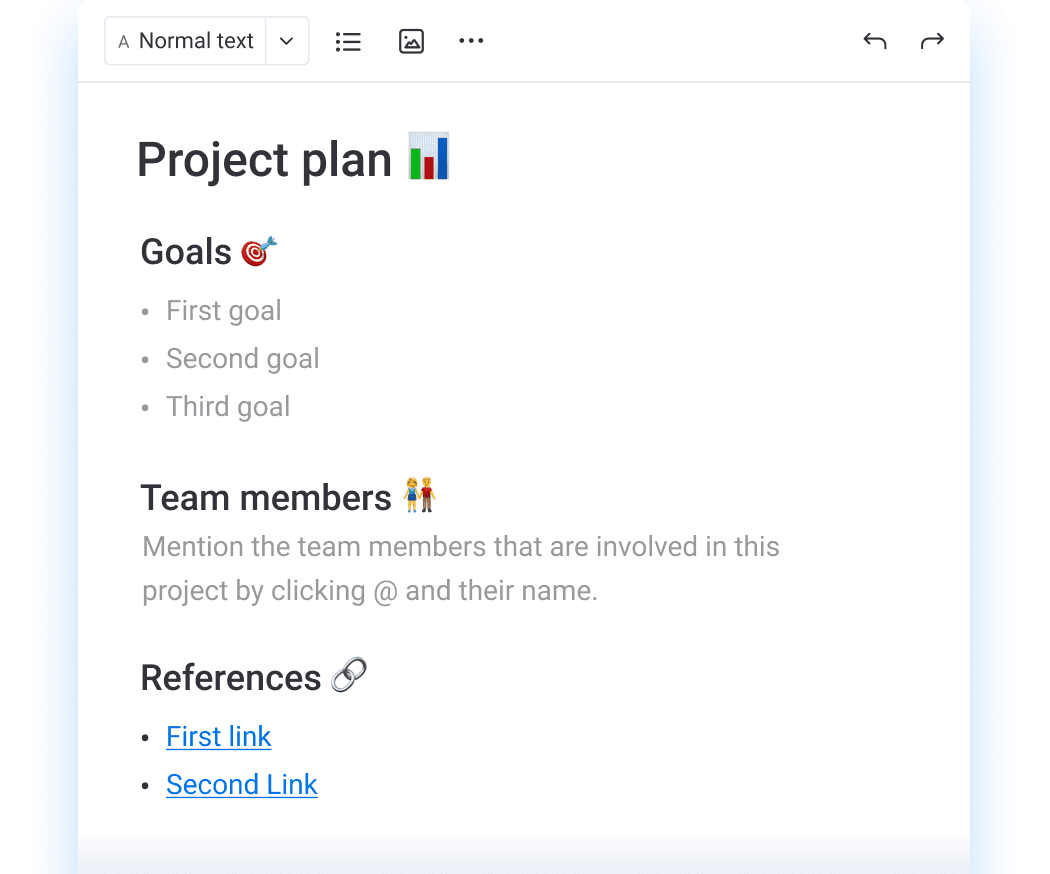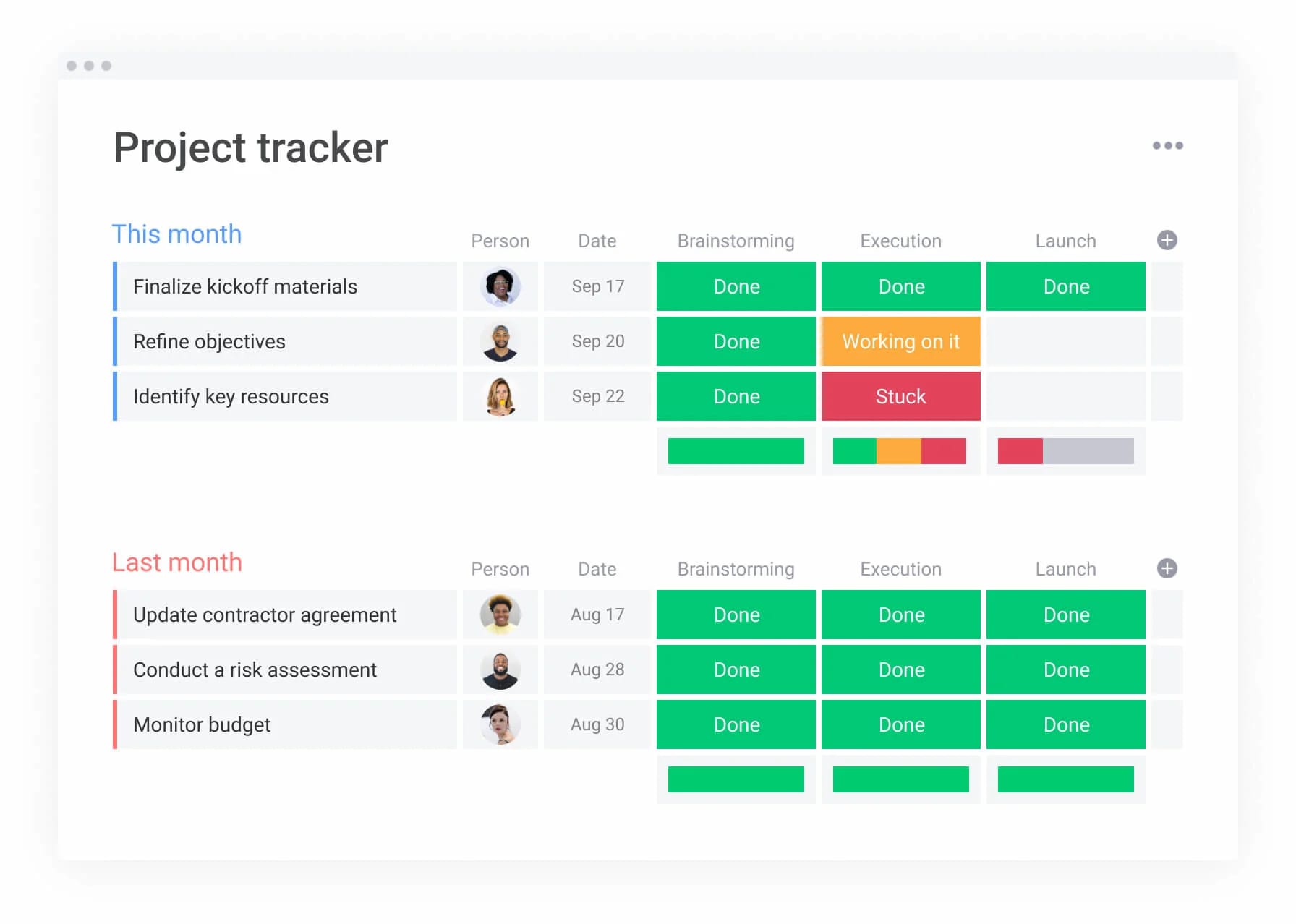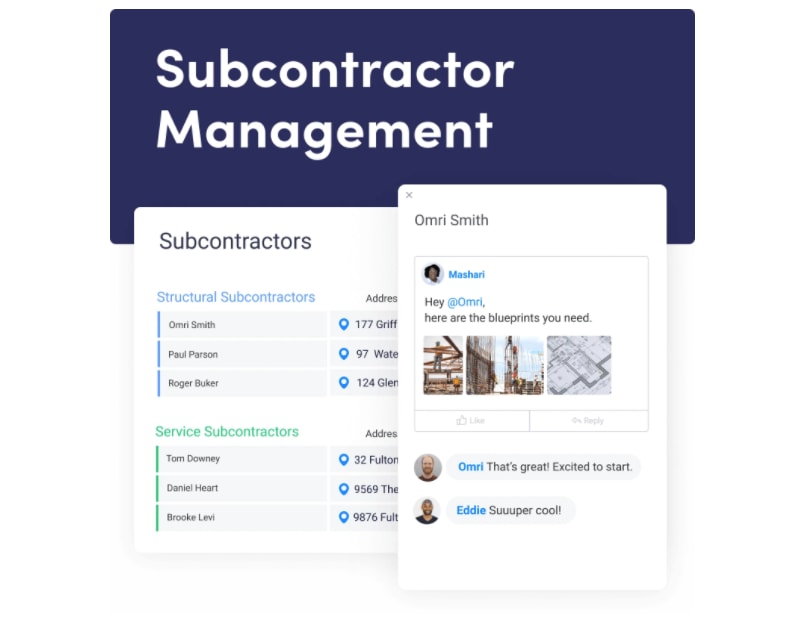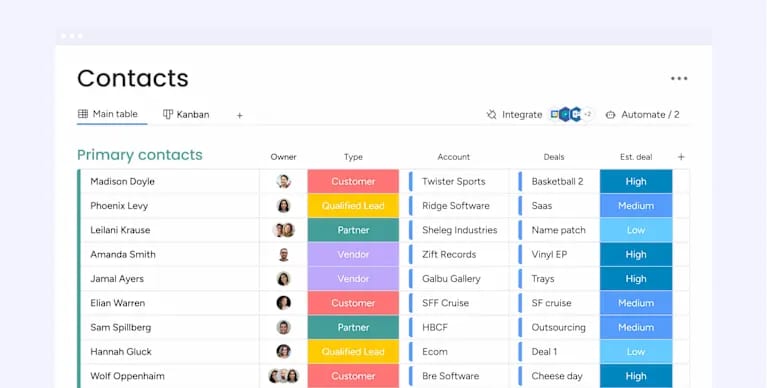Project closeout is often the most demanding phase of any build or campaign. It’s where the smallest overlooked details can snowball into costly delays, strained client relationships, or lost revenue. A clear, consistent punch list template helps you avoid those pitfalls by turning loose notes and scattered updates into a structured, trackable workflow.
Using a template ensures everyone knows exactly what needs fixing, who’s responsible, and when each item is complete. It brings order and accountability to the final stretch—so teams can focus on delivering quality work instead of chasing last-minute corrections.
This practical guide explores what makes an effective punch list template, practical ways to tailor it for different types of projects, and tips to make closeout faster, more accurate, and less stressful.
Key takeaways
- Define your punch list early: start documenting incomplete or defective work items before project completion to avoid payment delays and client disputes.
- Time your process wisely: begin your punch list around 85–90% completion to allow room for corrections without last-minute pressure.
- Be specific and visual: include clear item descriptions, exact locations, and photos so contractors arrive prepared with the right tools and materials.
- Use digital tools for visibility: platforms like monday work management help automate punch list workflows, provide real-time updates, and keep all stakeholders aligned.
- Clarify ownership and deadlines: assign priorities, responsible owners, and realistic timelines while setting approval workflows that prevent bottlenecks.
What is a punch list template?
A punch list template is a standardized document used to track incomplete, incorrect, or defective work items that must be resolved before project completion. It functions as a structured checklist to ensure every task, detail, and correction is accounted for before handover.
From missing paint touch-ups to malfunctioning equipment, the punch list provides one organized source of truth that teams can reference to confirm all work meets specifications and quality standards. It’s the final step that turns a nearly finished project into a fully completed one.

Why every project needs a punch list template
A well-managed project doesn’t end when the main work is done — it ends when every final detail is complete and approved. That’s where a punch list template makes the difference. It keeps teams aligned, eliminates uncertainty, and helps you deliver work that meets every expectation.
Let’s take a closer look below at how it supports complete delivery, timely payments, and clear accountability.
Ensures complete project delivery
Small details slip through the cracks when teams rush toward deadlines. That missing outlet cover or unpainted trim might seem minor, but it can delay your entire project handover.
A punch list template captures these items systematically. It forces teams to slow down and inspect every aspect of the work against original specifications, serving as part of a broader project checklist.
Protects against payment delays
Clear documentation speeds up final payments. When clients can see exactly what’s been fixed and what remains, they’re more confident releasing funds.
This transparency eliminates the back-and-forth negotiations that often plague project closeouts. Both parties know exactly where things stand.
Creates accountability
Every punch list item is essentially an action item with a dedicated owner and a deadline. This structure eliminates the confusion that happens when multiple contractors point fingers at each other.
When you assign specific people to specific fixes, work moves forward. This ensures everyone knows who is responsible for fixing the crooked door frame.
Try monday work management
Essential elements of every punch list
A punch list template needs specific components to work effectively. These elements ensure you capture all necessary information without creating unnecessary complexity.
Here’s what every template should include:
- Project identification: include the project name, location, contract number, and date to prevent mix-ups between multiple projects.
- Item details: write clear descriptions such as “repair 2-inch crack in lobby ceiling” instead of vague notes like “fix ceiling.”
- Location specifics: note exact locations such as “third floor, room 302, north wall” to save time during corrections.
- Responsible party: assign each item to a specific contractor or team member who will complete the work.
- Priority level: mark items as high, medium, or low priority based on safety impact and project requirements.
- Due date: set realistic completion dates based on item complexity and contractor availability.
- Status tracking: use simple markers like open, in progress, completed, and verified to show progress.
- Photo documentation: include space for before-and-after photos to verify completion.
Punch list templates by project type
Different projects demand specialized approaches to catch and resolve final issues. Whether you’re managing a residential remodel or overseeing commercial construction, these tailored templates help you track the details that matter most for your specific project type.
Construction punch list template
Construction projects often involve multiple teams working in parallel: from electricians and plumbers to HVAC technicians and finish carpenters. A well-structured punch list helps coordinate these moving parts and ensures every correction is documented and verified before handover.
These templates typically focus on:
- Code compliance: include permit numbers, inspection details, and safety checks.
- Quality assurance: capture field notes, defect types, and completion status for each trade.
- Sign-off tracking: record approvals from inspectors and project managers to close out items systematically.
Platforms like monday work management make this process easier by centralizing punch list updates, tracking dependencies between trades, and providing a clear view of progress across the entire job site.
Residential remodel punch list
Homeowners live through these projects, making communication critical. Your template needs to accommodate their feedback while managing their expectations about timeline and process.
Focus on finish quality and matching existing materials. Include fields for homeowner approval and notes about specific preferences. Schedule work around family routines to minimize disruption.
Commercial construction punch list
Commercial projects face unique pressures around business operations and regulatory compliance. Your template must track ADA requirements, fire safety standards, and tenant improvement specifications.
After-hours work coordination becomes essential. Include fields for access requirements, security protocols, and business operation schedules to prevent conflicts.
Home inspection punch list
Real estate transactions depend on these punch lists. Buyers use them to negotiate repairs or price adjustments before closing.
Organize items by severity — safety issues first, then structural concerns, followed by cosmetic items. Include estimated repair costs to support negotiation discussions.
Facility maintenance punch list
Ongoing facility management requires a different approach than one-time projects. Your template needs to handle recurring issues and preventive maintenance alongside repairs.
Track warranty information, vendor performance, and maintenance history. This data helps you make smarter decisions about repairs versus replacements over time.

How to create your punch list in 5 steps
A strong punch list starts with clear structure and accountability. Pairing it with an action plan template also helps outline responsibilities, timelines, and next steps so nothing slips through the cracks.
Follow these five steps to capture issues early, assign owners, and complete closeout tasks efficiently
Step 1: conduct a comprehensive walkthrough
Schedule your walkthrough when work is substantially complete but before final clean-up. Bring all key stakeholders — project manager, contractor, quality inspector, and client representative.
Walk systematically through every space. Check each element against plans and specifications. Inspect every area, even those that “look fine,” to ensure a thorough review.
Step 2: document all outstanding items
Accurate documentation keeps closeout work organized and prevents confusion between teams. Each entry on your punch list should clearly describe what needs attention and include enough detail for anyone on site to understand what to fix.
- Write clear, specific descriptions: use precise language, such as “repair drywall damage in conference room, northwest corner, approximately six inches in diameter,” instead of vague notes like “fix wall.”
- Include visual evidence: take photos of every issue to avoid disputes and help contractors prepare for repairs. Work management platforms such as monday work management allow teams to store these images, comments, and updates in one shared workspace for greater visibility.
Step 3: assign priorities and owners
Not all punch list items are equal. Safety issues and code violations need immediate attention. Cosmetic fixes can wait if necessary.
Assign each item to the responsible contractor. Consider their current workload and expertise when making assignments. Some items might need coordination between multiple trades.
Step 4: set realistic completion dates
Factor in material availability, contractor schedules, and potential complications. That custom door hardware might take three weeks to arrive — plan accordingly.
Build buffer time into your schedule. Weather delays, inspection availability, and unexpected discoveries can all impact timelines.
Step 5: track progress and update status
Regular check-ins keep momentum going. Schedule weekly walkthroughs to verify completed items and identify any new issues.
Use automated notifications in your project management platform to remind contractors of upcoming deadlines. This proactive approach prevents last-minute scrambles.
Try monday work managementWho manages the punch list process?
Clear roles and responsibilities prevent confusion during punch list execution. Each party has specific duties that contribute to successful project completion:
General contractor responsibilities
The general contractor oversees the entire punch list process — from creating the initial list to coordinating corrections and verifying completion quality.
They also manage subcontractor schedules to prevent overlap, ensure each trade has access when needed, and protect finished areas from damage. Using a modern work management platform like monday work management helps general contractors track progress, manage approvals, and keep multiple projects aligned without losing visibility.
Subcontractor roles
Subcontractors receive their assigned items and execute corrections according to specifications. In some cases, a printable work order template can streamline requests to external providers or specialized technicians. They must communicate delays or issues immediately to prevent schedule impacts.
Quality matters as much as speed. Subcontractors remain responsible for their punch list work under original warranty terms. Rushed corrections that fail later reflect poorly on everyone.
Owner and architect involvement
Owners and architects provide final approval for all corrections. They verify that completed work matches original design intent and contract requirements.
Their timely response keeps projects moving. Delayed inspections or unclear feedback can stall completion and frustrate contractors waiting for approval.

Punch list format options for modern teams
The way you structure your punch list affects how efficiently teams communicate and close out work. Before choosing a format, consider whether a task management vs project management approach fits your workflow best — one focuses on individual tasks, while the other supports larger, coordinated efforts.
Modern teams can choose from several formats, each offering different levels of flexibility, collaboration, and control (as outlined below).
| Format type | Best for | Key features | Collaboration level |
|---|---|---|---|
| Excel spreadsheet | Small teams, simple projects | Familiar interface, offline access, formula calculations | Low |
| Word/PDF document | Documentation, archives | Easy printing, simple sharing, limited editing | Very low |
| Cloud platform | Multi-team projects | Real-time updates, mobile access, automated workflows | High |
| Mobile app | Field teams | Photo integration, offline sync, GPS location tracking | High |
Excel punch list template
Excel to do list solutions remain popular for their flexibility and familiarity. You can customize columns, add formulas, and work offline when needed.
However, managing version control can become challenging when multiple people are editing the same file. Someone always has an outdated version, leading to confusion and rework.
Word and PDF templates
Documents work well for simple, static punch lists. They’re easy to print and share via email without special software.
The downside? No real-time updates or progress tracking. You’re constantly creating new versions and hoping everyone has the latest one.
Cloud-based solutions
Digital platforms transform punch list management, and with 82% of employees already using work/project management software, it’s a natural transition for modern teams. Instead of getting lost in email chains, teams update items instantly and stakeholders see real-time progress — a move that construction leaders report could save them approximately 10.5 hours per week.
Intuitive solutions like monday work management offer fantastic support as you transition ton a cloud-based solution. You and your team will be able to create custom punch list boards, automate status updates, and integrate with your existing project workflows — all from one platform.
Mobile-ready formats
Field teams need mobile access. They’re on-site, identifying issues and verifying corrections. Desktop-only solutions slow them down.
Look for a task list app with robust mobile features. The ability to add photos, update status, and communicate from the job site accelerates punch list resolution.
7 ways to prevent common punch list delays
Even experienced teams make predictable errors that extend timelines. Understanding these pitfalls helps you avoid them.
1. Starting the process too late
Begin creating your punch list when the project reaches 85-90% completion. This gives you time to address issues without rushing.
Late starts create cascading delays. Contractors scramble to fix problems, quality suffers, and clients lose confidence in your ability to deliver.
2. Using vague descriptions
“Fix door” tells contractors nothing useful. “Adjust master bedroom door to close properly, currently sticks at top of frame” gives them actionable information.
Specific descriptions eliminate guesswork. Contractors arrive prepared with the right tools and materials, saving everyone time.
3. Missing photo documentation
Photos provide context that words can’t capture. They show exact locations, severity, and surrounding conditions that affect repair approaches.
Always attach photos to punch list items. This visual evidence prevents disputes and helps contractors plan their work effectively.
4. Poor communication between teams
Information silos kill punch list efficiency, a challenge underscored by the fact that only 61% of employees in large enterprises are satisfied with transparency in their organization.
Considering large projects can produce, on average, 130 million emails, it’s also really easy to see how work gets duplicated or missed entirely when teams don’t share updates in a central location.
It’s absolutely vital to centralize communication in one platform, which is why turning to a platform like monday work management can help: it enables you to keep all punch list discussions, updates, and decisions in one accessible location.
5. Unrealistic completion timelines
That bathroom tile replacement might seem simple until you discover the special-order materials have a six-week lead time.
Set deadlines based on reality, not wishful thinking. Consider material availability, contractor schedules, and potential complications when planning timelines.
6. Lack of priority rankings
Without clear priorities, teams waste time on cosmetic issues while safety problems wait. This backwards approach risks accidents and code violations.
Establish a simple priority system. Safety first, then functional issues, followed by aesthetic concerns. This keeps everyone focused on what matters most.
7. No approval process
Ambiguous approval authority creates bottlenecks. Work sits completed but unapproved because no one knows who can sign off.
Define approval workflows upfront. Specify who can approve different types of corrections and what documentation they need.

Streamline your punch lists with monday work management
Even the most detailed punch list can become a bottleneck when managed through disconnected spreadsheets, emails, and paper forms. These manual methods slow communication, increase the chance of errors, and make it difficult to track real progress across teams.
Modern work management platforms like monday work management bring structure and visibility to every stage of closeout. From automated notifications to AI-powered insights and mobile updates from the field, they centralize punch list tracking so everyone stays aligned and projects finish faster.
Below are a few ways monday work management helps teams simplify and strengthen their punch list process.
Automated punch list workflows
Set up automations that handle routine tasks without manual intervention. When someone marks an item complete, the system notifies inspectors automatically. Due date reminders keep contractors accountable.
These automations free your team from administrative tasks. They can focus on solving problems instead of managing spreadsheets, ensuring a smoother path to your final project closure template.
AI-powered issue resolution
AI tools can take punch list management from reactive to proactive by helping teams identify, assign, and resolve issues faster.
- Automatic categorization: detect and group defects based on photo uploads and descriptions.
- Smart recommendations: suggest responsible contractors or teams using patterns from past projects.
- Predictive timelines: estimate completion dates based on similar historical issues to plan resources more accurately.
This intelligence helps teams prioritize effectively, reduce rework, and focus attention where it’s needed most.
Real-time collaboration platforms
Every stakeholder sees the same information at the same time. Field teams update items on-site, project managers track progress from the office, and clients monitor completion from anywhere.
This transparency builds trust. No more “I didn’t know about that” or “nobody told me” excuses that derail projects.
Visual progress dashboards
See your entire punch list status at a glance. Color-coded charts show completion percentages, overdue items, and workload distribution across contractors.
Executives get high-level summaries while field teams see their specific assignments. Everyone gets the view they need without information overload.
Mobile access for field teams
Your superintendent spots an issue during their morning walkthrough. They add it to the punch list immediately, complete with photos and location details.
By the time they’re back in the office, the responsible contractor already has the assignment. This speed keeps projects moving toward completion.
Ready to transform your punch list process? Get Started with monday work management today.
Try monday work managementFrequently asked questions
How long should punch list completion typically take?
Punch list completion typically takes one to four weeks depending on project size and complexity. Simple residential projects might finish in a week, while large commercial projects could need a full month for all corrections.
Can punch list items become change orders?
Punch list items can become change orders if they involve work beyond the original contract scope. For example, if a punch list inspection reveals structural issues not covered in the original agreement, that would require a change order for additional work and payment.
What happens if punch list items are not completed on time?
When punch list items aren't completed on time, final payment is typically withheld until all work is finished. Contractors may also face daily penalties, lose future work opportunities, or damage their professional reputation in the industry.
How detailed should punch list item descriptions be?
Punch list descriptions should be specific enough that any qualified contractor could complete the work without additional clarification. Include exact locations, dimensions of issues, reference to applicable specifications, and any special requirements for the repair.
When should the punch list process begin during a project?
The punch list process should begin when the project reaches 85-90% completion. This timing allows enough finished work to inspect while leaving adequate time for corrections without delaying the overall project schedule.
Who has final approval authority on punch list completion?
The project owner or their designated representative typically has final approval authority on punch list completion. In some cases, architects or project managers may share this authority for technical items, but the owner makes the final decision to accept the work and release payment.
 Get started
Get started 

